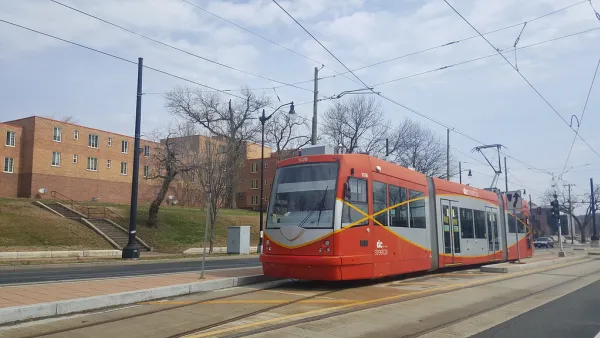A new article in the Journal of Planning Education and Research (@JPER7) by Hongwei Dong of California State University, Fresno, asks whether New Urbanist developments were more resilient in terms of recovering from the 2008 real estate crash.

In the 2000s, it was commonplace to hear from real estate experts that rising home prices were close to a sure bet. However, the 2008 crisis in the U.S. housing market followed by a slow recovery in many metropolitan areas, raised awareness of the real possibility that market downturns can erode home equity.
The question of what planners can do to create communities that are resilient to housing market downturns is receiving increasing attention. Previous cross sectional studies indicate that New Urbanist homes command premiums compared to similar homes in traditional post-war subdivisions. A new article in JPER (free until March 15) by Hongwei Dong of California State University, Fresno, asks whether New Urbanist developments have been more resilient in terms of recovering from the 2008 real estate crash.
Smokey Sky Mall (Image by Twelvizm)
Dong focuses on three counties in Metro Portland, Oregon, where he had access to sales prices for single family homes sold both in the period before the real-estate crash and during the recovery. New Urbanism is often identified as a design movement, but because there are so few New Urbanist developments, Dong investigates a host of land use, transportation, social, and demographic characteristics that relate to design characteristics advocated for by New Urbanists (e.g., street connectivity, land use mix, transit, and greater residential density).
Among the measures analyzed by Dong, mixed land uses did not impact values significantly, and density had a very minimal negative impact. Interestingly, school quality was also slightly negative, which might be explained by pre-bust bubble conditions in good districts. Homes in communities that were close to central Portland had the most price resilience. These were most often single-family homes located in walkable communities, with interconnected street networks, and sidewalks. Interestingly, being near downtown was important, but access to transit was mixed, and areas with only good bus service, without other New Urbanist amenities, showed less resilience.

However, the study suggests that synergistic effects exist between different dimensions of New Urbanist development. Neighborhoods that show not only smarter land use patterns and denser transit service but also good access to light rail transit and high-quality bike routes helped single-family homes sustain their values in the recession.

One interesting future question is whether Portland’s downtown draw is unique. Would it extend to a declining industrial city, such as Detroit, or a sprawling Sun Belt one, such as Atlanta? Finally, New Urbanism is a design movement, and often includes master planned communities. An interesting extension of this research would be to compare the performance of these communities to traditional ones.
Blog post by Thomas Douthat, and Dr. Hongwei Dong of Fresno State.
You can also follow @JPER7 on Twitter or like us on Facebook.com/JPERPlanning.

Analysis: Cybertruck Fatality Rate Far Exceeds That of Ford Pinto
The Tesla Cybertruck was recalled seven times last year.

National Parks Layoffs Will Cause Communities to Lose Billions
Thousands of essential park workers were laid off this week, just before the busy spring break season.

Retro-silient?: America’s First “Eco-burb,” The Woodlands Turns 50
A master-planned community north of Houston offers lessons on green infrastructure and resilient design, but falls short of its founder’s lofty affordability and walkability goals.

Test News Post 1
This is a summary

Analysis: Cybertruck Fatality Rate Far Exceeds That of Ford Pinto
The Tesla Cybertruck was recalled seven times last year.

Test News Headline 46
Test for the image on the front page.
Urban Design for Planners 1: Software Tools
This six-course series explores essential urban design concepts using open source software and equips planners with the tools they need to participate fully in the urban design process.
Planning for Universal Design
Learn the tools for implementing Universal Design in planning regulations.
EMC Planning Group, Inc.
Planetizen
Planetizen
Mpact (formerly Rail~Volution)
Great Falls Development Authority, Inc.
HUDs Office of Policy Development and Research
NYU Wagner Graduate School of Public Service




























